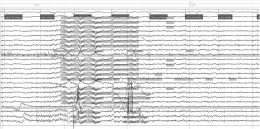
Nevertheless, the available bandwidth is sometimes volatile and insufficient, especially in mobile networks and in developing countries. The need for more bandwidth and network resources is largely fueled by large scale video streaming applications and by increasing consumer demand for better quality videos and larger display resolutions. Figure 3.10: An example of how your screen could look after completing the steps above.LIVE-NFLX-II: Towards Perceptually Optimized End-to-end Adaptive Video Streaming LIVE-NFLX-II Subjective Video QoE DatabaseĪccording to the Cisco visual index report, video traffic from content delivery networks is expected to occupy 71% of all consumed bandwidth by 2021. But in a later chapter we will see how we can record and save responses to a. Notice that so far we are just printing the responses to the console. # draw and show the image and the rating scale while ratingScale.noResponse: Stimulus = visual.ImageStim(win, image = i, pos = ) # then we loop through the images and for each image we also draw a rating scale for i in images:

Path = "images/" # get all the image names from the directory Win = visual.Window(fullscr= True, color= 'black')
Psychopy scale description full#
Notice that here we will get a window in full screen and with the color black # import the necessary modules: from psychopy import visual Below you will see an example of what such a script could look like. Often this procedure will be part of a sequence where the participant sees an image and then responds to it through a number of trials. This means that the rating scale will continue to be drawn, updated and shown as long as the participant doesn't respond by clicking with the mouse on the desired rating. In this case, the condition is defined by the command ratingScale.noResponse. A while-loop create a state where things are repeated infinitely until a certain condition change. Notice that here we are using a new kind of loop, while. # show the rating scale until participant clicks MarkerStart = 5, #This sets the rating scale to have its marker start on 5. ShowAccept = False, #This shows the user's chosen value in a window below the scale. SingleClick = True, #This allows the user to submit a rating by one click.

High = 10, #This is the maximum value of the scale. Low = 1, #This is the minimum value I want the scale to have. Scale = None, #This makes sure there's no subdivision on the scale. This function has a lot of parameters and for once, psychopy's defaults are often not what you want, so here follows a suggestion to how we can specify these in order to get a nice and functional rating scale: # define rating scale Then let define our rating scale using the function visual.RatingScale(). The rating scale function is part of the visual module, so we will make sure to have that loaded. Then we could present images one-by-one and ask participants to rate the emotional intensity of the images on a scale from 1-10, where 1 is negative and 10 is positive.

Lets imagine, for instance, that we were interested in participants' emotional reactions to some pictorial stimuli.
Psychopy scale description how to#
This section focuses on teaching you how to do that. For this you will need to create a rating scale on the screen where the stimuli is shown, and you will want to record the participant's rating of the stimuli. In some experiments, you will want to give the participant the option of rating some stimuli on a rating scale of for example 1-10.


 0 kommentar(er)
0 kommentar(er)
